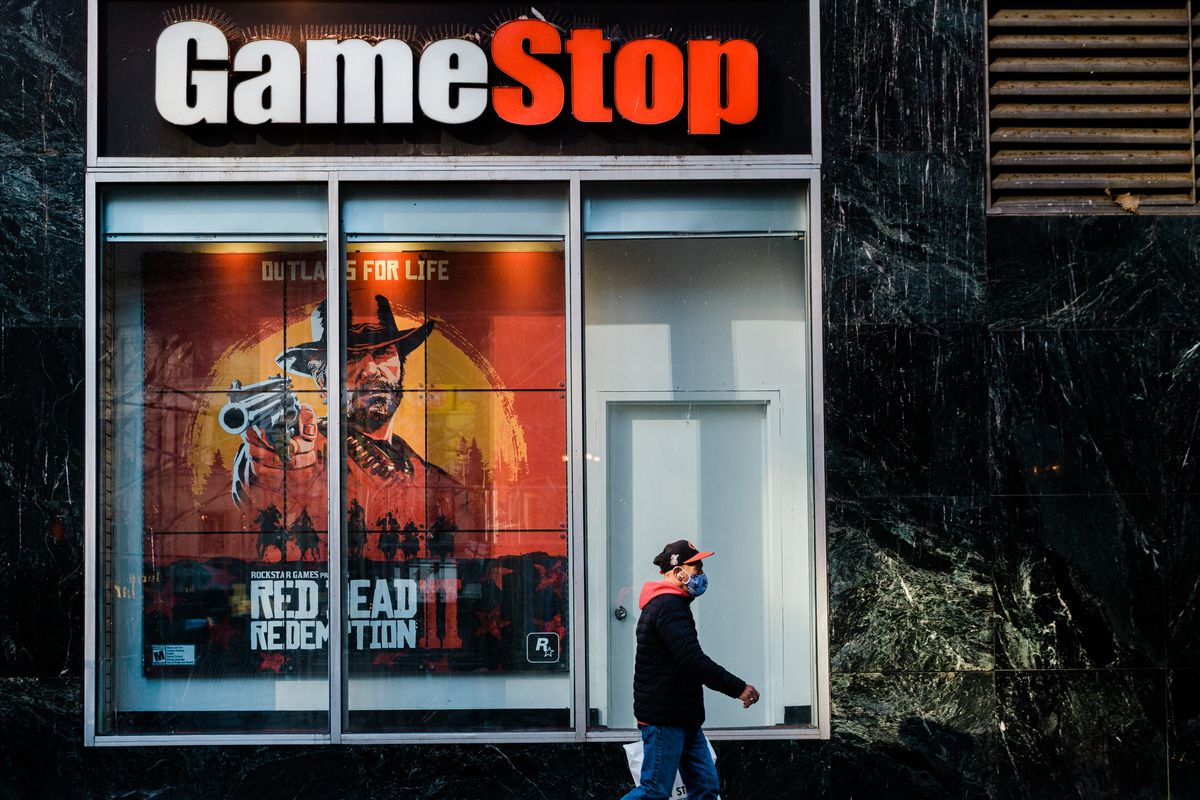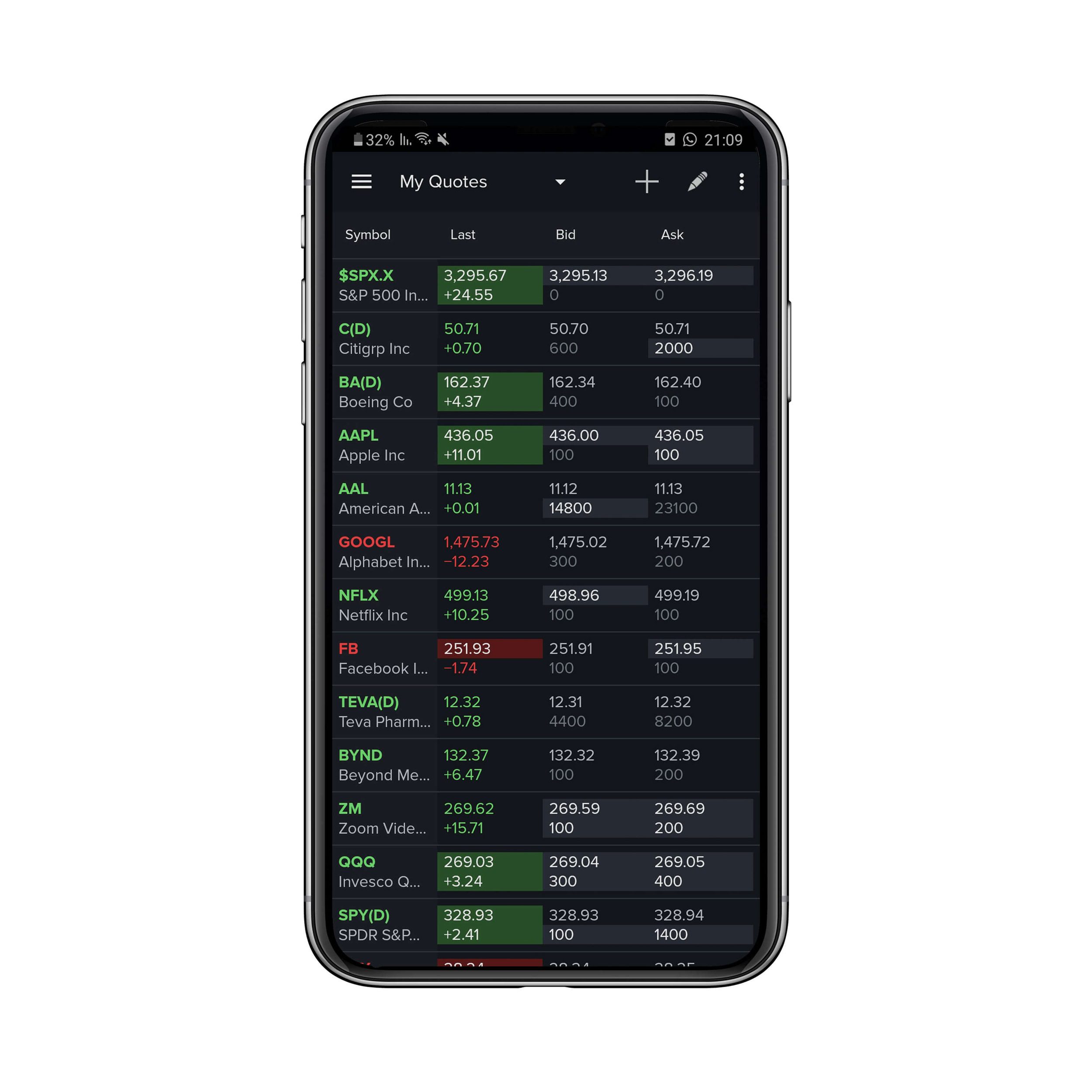

Finance
What Does A Triple Top Mean In Stocks
Published: January 18, 2024
Learn what a triple top pattern signifies in the world of stocks and finance, and how it can impact your investment decisions.
(Many of the links in this article redirect to a specific reviewed product. Your purchase of these products through affiliate links helps to generate commission for LiveWell, at no extra cost. Learn more)
Table of Contents
Introduction
Welcome to the world of stock market analysis! As an investor or trader, it is crucial to understand various patterns and indicators that can help in making informed decisions. One such pattern is the Triple Top pattern, which is commonly used by technical analysts to identify potential trend reversals in stocks.
The Triple Top pattern is a significant chart pattern that occurs when the price of a stock reaches a certain level multiple times, but fails to break through. It is a reversal pattern, indicating that the stock may have reached a resistance level and is likely to experience a downward trend.
In this article, we will take a closer look at what a Triple Top pattern is, its characteristics, formation, and the significance it holds in the world of stock market analysis. We will also explore different trading strategies that can be implemented when a Triple Top pattern emerges.
Understanding the Triple Top pattern and how to identify it can be a valuable tool in your arsenal as an investor or trader. By recognizing this pattern, you can make well-informed decisions and potentially capitalize on the upcoming trend reversal.
Now, let’s dive deeper into the world of Triple Top patterns and explore how they can empower you to become a more successful stock market participant.
Definition of Triple Top
A Triple Top is a technical analysis chart pattern that indicates a potential trend reversal in a stock’s price. This pattern is characterized by three consecutive peaks, formed at approximately the same price level, followed by a decline in price. It is a bearish pattern and is considered reliable when identified correctly.
Each peak in a Triple Top pattern represents a failed attempt by the stock price to break through a resistance level. The level at which the stock price fails to break through becomes significant because it suggests that there is strong selling pressure preventing further upward movement.
To identify a Triple Top pattern, traders look for three distinct price peaks, with the middle peak being higher than the other two. The lows between the peaks are often connected by a trendline, forming the neckline of the pattern. Once the stock price breaks below the neckline, it confirms the completion of the Triple Top pattern and signals a potential downward reversal.
It’s important to note that the timeframe in which the Triple Top pattern occurs can vary. Traders may observe this pattern on daily, weekly, or monthly charts. The significance of the pattern remains the same regardless of the timeframe.
The Triple Top pattern is the opposite of the Triple Bottom pattern, which indicates a potential bullish reversal. While both patterns have similar characteristics, they differ in terms of their direction and implications for future price movements.
Now that we have a clear definition of what a Triple Top pattern is, let’s explore the key characteristics that can help identify this pattern successfully.
Characteristics of a Triple Top Pattern
Identifying a Triple Top pattern requires careful observation and attention to detail. Here are some key characteristics to look for when analyzing this pattern:
- Three Peaks: A Triple Top pattern consists of three consecutive peaks, with each peak reaching a similar price level. The middle peak is typically higher than the other two, forming a distinct “topping out” pattern.
- Neckline: The lows between the peaks are connected by a trendline, forming the neckline of the pattern. It acts as a support level, and the confirmation of the pattern occurs when the stock price breaks below this neckline.
- Volume: Volume plays a crucial role in confirming the Triple Top pattern. During the formation of the three peaks, the volume tends to decrease. However, when the stock price breaks below the neckline, there is often an increase in volume, indicating strong selling pressure and confirming the bearish reversal.
- Timeframe: The timeframe in which the Triple Top pattern forms can vary. Traders can observe this pattern over days, weeks, or even months. However, the longer the pattern takes to form, the stronger its significance is considered.
- Price Target: Once the Triple Top pattern is confirmed, traders often project a price target by measuring the vertical distance between the neckline and the highest peak of the pattern. This distance is then projected downward from the neckline, indicating the potential target for the stock’s decline.
It is important to remember that not all patterns labeled as Triple Tops will lead to a reversal. False signals can occur, so it is crucial to consider other technical indicators and analyze the overall market conditions before making any trading decisions based solely on the pattern.
Now that we understand the characteristics of a Triple Top pattern, let’s explore how such patterns are formed in the market.
Formation of a Triple Top Pattern
The formation of a Triple Top pattern occurs as a result of market dynamics and investor psychology. Let’s take a closer look at the step-by-step process of how this pattern is formed:
- First Peak: The stock price experiences an upward movement, reaching a significant resistance level. However, it fails to break through and falls back down, forming the first peak of the Triple Top pattern. This indicates that there is considerable selling pressure at that particular price level.
- Retracement: After reaching the first peak, the stock price retraces and experiences a temporary decline. This retracement can create doubt among traders, as they question if the stock price will make another attempt to break through the resistance level.
- Second Peak: The stock price makes a second upward move, again reaching the same resistance level. This time, there might be optimism among traders that the price will break through the resistance. However, the stock price fails to do so and falls back down, forming the second peak of the Triple Top pattern.
- Consolidation: Following the failure of the second peak, the stock price undergoes a period of consolidation. It moves sideways, with little to no significant price movement. This consolidation phase can be seen as a battle between buyers and sellers, as they assess the stock’s future direction.
- Third Peak: The stock price makes a final attempt to break through the resistance level, forming the third and final peak of the Triple Top pattern. Traders who were optimistic about a breakout might still have hope at this stage, but the rejection at the resistance level becomes evident.
- Breakdown: After the formation of the third peak, the stock price finally breaks below the neckline, confirming the Triple Top pattern. This breakdown indicates that the selling pressure has overwhelmed the buying pressure, and a trend reversal is likely to occur.
It’s important to note that the timeframe for the formation of a Triple Top pattern can vary. It could take weeks, months, or even longer. Traders should monitor the pattern’s development and look for other confirming signals before making any trading decisions.
Now that we have a clear understanding of how a Triple Top pattern is formed, let’s explore its significance in stock market analysis.
Significance of a Triple Top Pattern
The Triple Top pattern holds significant importance in stock market analysis as it provides valuable insights into potential trend reversals. Here are some key reasons why the Triple Top pattern is considered significant:
- Trend Reversal Indicator: The Triple Top pattern is a reliable bearish reversal pattern. It suggests that the stock’s upward trend is losing momentum and that a downward trend is likely to follow. Traders and investors pay close attention to this pattern as it can provide an early warning sign of a trend reversal.
- Resistance Level Confirmation: The Triple Top pattern confirms that a particular resistance level is significant. It shows that the stock price has failed to break through the resistance level on three separate occasions, indicating strong selling pressure at that price level. Traders can use this information to set appropriate entry and exit points.
- Market Sentiment Indicator: The existence of a Triple Top pattern suggests a change in market sentiment. It reflects a shift from optimism and bullishness to pessimism and bearishness. Traders who closely follow market sentiment can use this pattern to adjust their trading strategies and take advantage of potential downturns.
- Confirmation through Volume: Volume plays a crucial role in confirming the Triple Top pattern. During the formation of the pattern, the volume tends to decrease, indicating a lack of buying interest. However, when the stock price breaks below the neckline, there is often a significant increase in volume. This surge in volume confirms the pattern and suggests a strong selling pressure.
- Price Target Projection: Once a Triple Top pattern is confirmed, traders often project a price target for the subsequent decline. This target is estimated by measuring the vertical distance between the neckline and the highest peak of the pattern and projecting it downward from the neckline. This price target can help traders plan their trades and set realistic profit targets.
Traders and investors should use the Triple Top pattern in conjunction with other technical analysis tools and indicators to increase the accuracy of their predictions. It is essential to consider the overall market conditions, investor sentiment, and the stock’s fundamentals before making any trading decisions based solely on the pattern.
Now that we understand the significance of the Triple Top pattern, let’s explore different trading strategies that can be implemented when this pattern emerges.
Trading Strategies for Triple Top Patterns
When a Triple Top pattern emerges, it presents traders with opportunities to capitalize on potential trend reversals and make profitable trades. Here are some trading strategies that traders can consider when identifying a Triple Top pattern:
- Short Entry: A common strategy is to enter into a short trade position when the stock price breaks below the neckline of the Triple Top pattern. This break below the neckline confirms the pattern and indicates a potential downward trend. Traders can initiate short positions, aiming to profit from the anticipated decline.
- Stop Loss and Take Profit: It’s essential to set appropriate stop loss and take profit levels to manage risk and protect capital. Traders can place a stop loss order above the neckline to limit potential losses if the stock price reverses and invalidates the Triple Top pattern. Take profit levels can be set based on the projected price target, determined by the vertical distance between the neckline and the highest peak of the pattern.
- Confirmation Indicators: Traders should consider using additional technical indicators to confirm the Triple Top pattern. Indicators such as the Relative Strength Index (RSI), Moving Averages, or support and resistance levels can provide further validation of the expected trend reversal. The convergence of multiple indicators can increase the probability of a successful trade.
- Volume Analysis: Paying attention to volume can provide valuable insights into the strength of the Triple Top pattern. As the stock price breaks below the neckline, an increase in volume confirms the bearish sentiment and the potential for a significant decline. Traders can monitor volume patterns to support their trading decisions.
- Risk Management: As with any trading strategy, risk management is crucial when trading Triple Top patterns. Traders should ensure they have a clear risk management plan in place, including position sizing, proper allocation of capital, and a disciplined approach to stop loss orders. It’s important to only risk a small percentage of capital on any single trade.
It’s worth noting that not all Triple Top patterns will lead to successful trades. False breakouts and trend reversals can occur, so it’s important to consider the overall market conditions and use additional technical analysis tools to confirm the pattern before executing a trade.
Lastly, traders should continuously monitor their trades and adjust their strategies as the trade progresses. Regular analysis and evaluation of the trade can help identify signs of potential changes in the trend and allow for timely adjustments to maximize profits or limit losses.
Now, let’s take a look at some real-world examples of Triple Top patterns in stocks.
Examples of Triple Top Patterns in Stocks
Triple Top patterns can be found in various stocks across different sectors. Here are a few examples of Triple Top patterns in stocks:
- Example 1: Company XYZ: The stock of Company XYZ has been experiencing an uptrend, reaching a resistance level of $50 three times over a period of several months. Each time the price reaches $50, it fails to break through and begins a downward move. Traders identify this as a Triple Top pattern, and once the stock breaks below the neckline, they enter into short positions with a price target projected to be $40.
- Example 2: Company ABC: Company ABC’s stock has formed a Triple Top pattern over a span of six months. The stock price peaks at $80 three times but fails to break through and starts a downward trend. Traders identify this pattern and place a stop loss order above the neckline, ensuring they exit the trade if the pattern fails. They set a take profit level around $65 based on the projected price target.
- Example 3: Company PQR: In the case of Company PQR, the stock forms a Triple Top pattern on a daily chart. Traders notice three peaks at around $30 and a neckline connecting the lows between the peaks. The stock price breaks below the neckline with high trading volume, confirming the pattern. Traders initiate short positions, setting a tight stop loss above the neckline and a take profit target near $22.
These examples illustrate how Triple Top patterns can occur in different stocks and timeframes. It’s important to conduct thorough analysis and consider additional factors such as market conditions, news events, and sector performance before making any trading decisions based on pattern identification alone.
Remember, patterns alone do not guarantee success, and it is crucial to combine them with proper risk management and a comprehensive trading strategy.
Now, let’s take a look at the limitations and risks associated with trading Triple Top patterns.
Limitations and Risks of Triple Top Patterns
While Triple Top patterns can be valuable tools in technical analysis, it’s important to understand their limitations and associated risks. Here are some key considerations:
- False Signals: Not all patterns labeled as Triple Tops will result in a successful trend reversal. False breakouts and trend continuations can occur, leading to potential losses if traders solely rely on pattern identification without additional confirmation.
- Subjectivity: Identifying Triple Top patterns requires subjective interpretation. Traders may have differing opinions on the exact price levels or timeframes that define the triple peaks and neckline. This subjectivity can lead to variations in how traders identify and trade the pattern.
- Market Conditions: Triple Top patterns should be analyzed in the context of broader market conditions. Market volatility, economic events, and sector performance can influence the success of these patterns. It’s important to consider these factors and use additional technical analysis tools to confirm the pattern.
- Risk of False Breakouts: Some Triple Top patterns may experience false breakouts, where the stock price briefly breaks below the neckline but quickly reverses and continues the uptrend. Traders must use appropriate stop loss orders and be prepared to exit the trade if the pattern fails to confirm.
- Limited Price Projection: While Triple Top patterns provide a projected price target based on the height of the pattern, it is important to note that this is just an estimate. Market dynamics can change, and the stock price may not reach the projected target. Traders should factor in this uncertainty and adjust their trade management accordingly.
To mitigate these limitations and risks, traders should consider using additional technical indicators, fundamental analysis, and market sentiment to confirm the Triple Top pattern. Diversifying the analysis can provide a more holistic view and increase the probability of successful trades.
Additionally, traders should always practice sound risk management principles, including using appropriate position sizing, setting stop loss orders, and being mindful of overall portfolio diversification.
Now that we have discussed the limitations and risks of Triple Top patterns, let’s wrap up our discussion.
Conclusion
The Triple Top pattern is a powerful tool in the technical analysis of stocks. By identifying and understanding this pattern, traders can potentially take advantage of trend reversals and make profitable trading decisions.
We have explored the definition of the Triple Top pattern, its characteristics, and the process of its formation. We have also discussed the significance of the pattern in stock market analysis, including its role as a trend reversal indicator, resistance level confirmation, and market sentiment indicator.
Trading strategies for Triple Top patterns, such as short entry positions and proper risk management techniques, have been outlined. We have examined real-world examples of Triple Top patterns in stocks, highlighting their application in various market scenarios.
However, it is crucial to acknowledge the limitations and risks associated with Triple Top patterns. False signals, subjectivity in pattern identification, and the impact of market conditions must be considered. Risk management and the use of additional technical indicators are essential to increase the probability of success.
In conclusion, the Triple Top pattern offers traders a valuable tool for identifying potential trend reversals in stocks. By incorporating this pattern into their technical analysis toolkit, traders can enhance their decision-making process and potentially capitalize on profitable opportunities in the dynamic world of the stock market.
Remember, successful trading is a combination of careful analysis, risk management, and adapting to the ever-changing market conditions. Continuously refine your skills and seek out ongoing education to stay ahead of the game. Best of luck on your trading journey!














